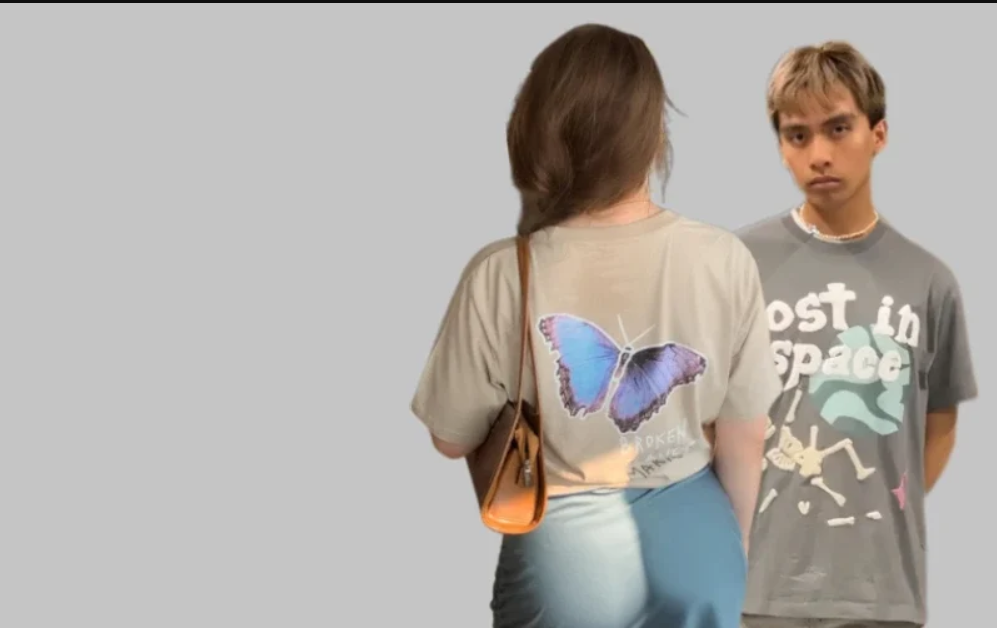Fashion is a dynamic and ever-evolving reflection of human society. It captures the essence of different eras, showcasing the changes in culture, technology, and societal values. From the simple garments of ancient times to the intricate designs of the modern era, fashion has continuously transformed, telling the story of humanity’s journey through time. Let’s explore this fascinating evolution and see how fashion has shaped and been shaped by history.
Visit: Broken Planet
The Early Days: Necessity and Expression
In the beginning, clothing was primarily about necessity. Early humans used animal skins, leaves, and other natural materials to protect themselves from the harsh elements. These early garments were rudimentary but essential for survival. However, even in these ancient times, clothing also served as a form of expression. Tribal societies adorned themselves with body paint, feathers, and beads, signifying their social status, achievements, and tribal affiliations. These early adornments laid the foundation for the complex relationship between fashion and identity that would develop over the centuries.
Ancient Civilizations: Status and Craftsmanship
As human societies became more complex, so did their clothing. In ancient Mesopotamia, Egypt, and Greece, fashion was not only about practicality but also a marker of social status and identity. Mesopotamians wore garments made of wool and flax, often decorated with intricate patterns that indicated their social standing. In Egypt, linen was the fabric of choice, known for its lightness and breathability. Egyptian clothing was elaborate, with many garments adorned with gold, jewels, and intricate embroidery, reflecting the wearer’s wealth and social position.
In ancient Greece, fashion emphasized simplicity and elegance. The chiton and himation were draped garments that highlighted the natural beauty of the human form. Greek clothing was less about intricate decoration and more about the graceful flow of fabric. In Rome, the toga became a powerful symbol of Roman citizenship and social status, with different styles and colors indicating various ranks within society.
The Medieval Period: Hierarchy and Opulence
The medieval period in Europe saw fashion become a clear indicator of social hierarchy. The nobility wore luxurious fabrics such as silk, velvet, and brocade, often lined with fur and adorned with elaborate embroidery and jewels. Sumptuary laws regulated what different classes could wear, ensuring that clothing remained a clear marker of social status. Common people wore simpler, more practical garments made from wool and linen, designed for durability and functionality.
Medieval fashion was characterized by its complexity and layering. Garments such as tunics, surcoats, and cloaks were worn in multiple layers, each serving both practical and decorative purposes. The opulence of noble attire during this period was a testament to the wealth and power of the wearer, often serving as a visual display of their status.
The Renaissance: Rebirth and Refinement
The Renaissance was a period of cultural and artistic rebirth, and fashion evolved to reflect this new spirit. Clothing became more tailored and elaborate, emphasizing individual expression and artistic creativity. In Italy, the epicenter of the Renaissance, wealthy patrons commissioned garments made from luxurious fabrics like silk and velvet, adorned with lace, pearls, and intricate embroidery. The use of vibrant colors and innovative designs became a hallmark of Renaissance fashion, reflecting the era’s exuberance and cultural dynamism.
Fashion during the Renaissance was not only about aesthetics but also about social signaling. The elaborate clothing of the wealthy was designed to convey their status, sophistication, and patronage of the arts. Tailoring became more advanced, allowing for garments that accentuated the human form and showcased the wearer’s individuality.
The 18th and 19th Centuries: Revolution and Industrialization
The 18th century was marked by the Rococo style, characterized by ornate details, pastel colors, and extravagant silhouettes. The French court, particularly under Louis XVI and Marie Antoinette, set the trend for luxurious and highly decorated garments. However, the French Revolution brought a dramatic shift towards more restrained and practical clothing, symbolizing the democratic ideals of the time.
The 19th century saw the rise of the Victorian era, where fashion became even more elaborate with the introduction of crinolines, bustles, and corsets. Industrialization revolutionized the fashion industry, making fabrics and garments more affordable and accessible. The middle class could now participate in fashion trends, previously the domain of the elite. The emergence of fashion magazines and department stores further democratized fashion, making the latest styles available to a wider audience.
The Early 20th Century: Modernity and Liberation
The early 20th century brought significant innovation and liberation to fashion. The flapper style of the 1920s, characterized by shorter hemlines and looser silhouettes, symbolized the newfound freedom and modernity of the era. Designers like Coco Chanel revolutionized women’s fashion by introducing practical and comfortable clothing, such as jersey dresses and the iconic Chanel suit. The influence of cinema and Hollywood stars further popularized new styles, making fashion an integral part of popular culture.
The Mid-20th Century: Prosperity and Diversity
The mid-20th century saw fashion flourish in response to post-war prosperity and cultural shifts. The 1950s were characterized by glamorous, hourglass silhouettes popularized by designers like Christian Dior. The 1960s and 70s brought a wave of youth-driven fashion movements, from the mod styles of London to the bohemian and hippie looks of the counterculture. Fashion became a powerful form of self-expression, reflecting the dynamic social and cultural changes of the time.
The Late 20th Century: Globalization and Subcultures
The late 20th century was marked by the globalization of fashion and the rise of various subcultures. High fashion and street style began to influence each other, leading to the emergence of diverse and eclectic trends. Designers like Jean-Paul Gaultier and Vivienne Westwood drew inspiration from punk, goth, and hip-hop cultures, breaking traditional fashion boundaries. The advent of the internet and fashion magazines made it easier for trends to spread globally. Fashion became a melting pot of influences, reflecting the interconnectedness of the modern world.
The 21st Century: Digital Age and Sustainability
The 21st century has ushered in the digital age, transforming the fashion industry in unprecedented ways. Social media platforms like Instagram and TikTok have democratized fashion, giving rise to influencers and fast fashion brands that rapidly produce and distribute trendy clothing. However, this rapid consumption has also sparked concerns about sustainability and ethical practices. In response, many designers and brands are focusing on eco-friendly materials, ethical production, and slow fashion. Inclusivity and diversity have become central themes, with a broader representation of body types, ethnicities, and gender identities in fashion.
Conclusion: The Ever-Changing Canvas of Fashion
Fashion is a continuously evolving art form that mirrors the changes in society, culture, and technology. From the practical garments of ancient civilizations to the innovative designs of today, fashion has always been a means of self-expression and cultural commentary. As we move forward, fashion will continue to adapt and transform, reflecting the dynamic world we live in. Through its rich history, fashion tells the story of humanity’s creativity, resilience, and endless quest for beauty and identity.
Visit: Revenge Hoodie

